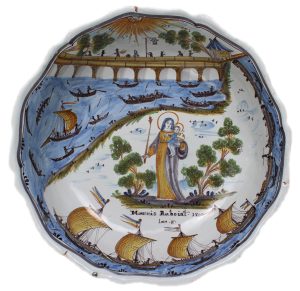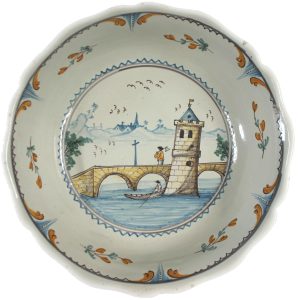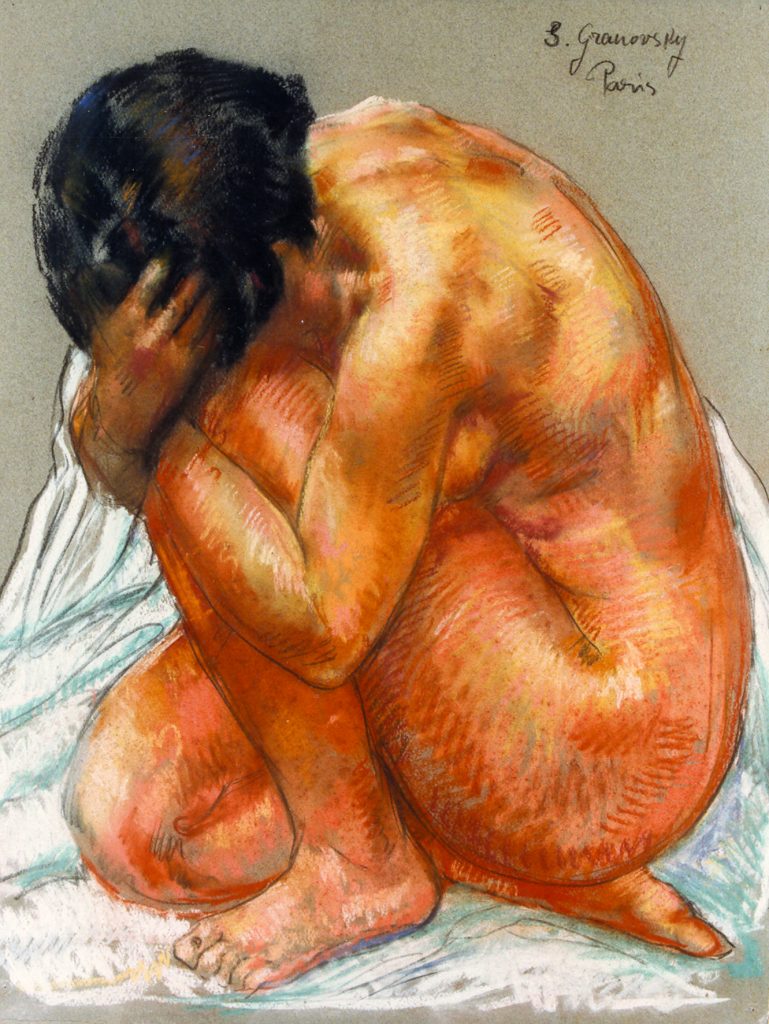Deepen your knowledge of the museum…
The Loire Museum organizes, on the first Wednesday of the month at 6 pm, conferences whose themes are drawn in turn from the collections or temporary exhibitions.
Access is free, reservation required at 03 86 26 71 02.
The program of the season:
Wednesday, April 6, 2022 at 6pm
Conference room on the1st floor of the Palais de Loire (reservation required at 03 86 26 71 02)
Ver-Vert, a Nivernais hero, by J.-M. Roudier, Heritage Curator, Nièvre Departmental Council
When Jean-Baptiste Gresset, a young Jesuit of 24 years, circulated anonymously in 1734 some copies of his heroic-comic poem Ver-Vert or the Voyages du parroquet of the Visitation of Nevers, he did not foresee the phenomenal success and durability of the work. The story of this pious parrot, sent by the Visitandines of Nevers to their Nantes sisters on a water mark, on which it will lose its Latin in the rough contact of the sailors of the Loire, will nevertheless know a hundred editions, many translations, generate a rich imagery, inspire an operetta in Offenbach …
Symbol of a freedom of expression to be conquered and of this Regency spirit that persisted under the reign of Louis XV, Ver-Vert earned its author an immediate exclusion from the Society of Jesus, and a literary career that will see him academician, covered with honors. Nevers keeps alive the memory of this talkative and turbulent bird, who helped to shape the myth of the sailors of the great river, villains on earth, lords on the water.
Wednesday, May 4, 2022 at 6pm
Loire Museum (reservation required at 03 86 26 71 02)
Visit-conference of the permanent rooms dedicated to the Loire and the exhibition "Reflections of earthenware", by the team of the Loire Museum
The earthenware of Nevers constitutes a real "book open on the Loire". If the river has largely contributed to the dissemination of this treasure of the Nivernais Heritage with the help of sailors, it is also at the origin of the most original and sought-after decorations. The emblematic blue of Nevers has thus magnified the Loire on these ceramic pieces that give pride of place to the small people of the Loire, to their beliefs and activities for the most part now gone. Sailors, fishermen, haulers, buoys, carpenters… animate the waves, the banks and the bridges, the patron saints bless the wealthy sponsors and the landscapes of the Loire are thus exported far from the Loire nivernaise which saw them born and inspired.
The Loire Museum invites you to leaf through this open book through guided tours of the Loire collections and the temporary exhibition Reflets de faïence. The museum team will accompany you alternately in three groups in the discovery of the themes dear to the potters of Nevers: trades, beliefs and navigation. You will also get acquainted with the techniques and history of ceramics by discovering the exceptional pieces gathered for the occasion in the exhibition.
Wednesday, June 22, 2022 at 6pm
Conference room on the1st floor of the Palais de Loire (reservation required at 03 86 26 71 02)
The earthenware of Nevers decorated with the Loire, by J. Rosen, Director of Research Emeritus at the CNRS
Since the end of the 17th century and until the beginning of the19th century, the manufacturers of Nevers have made extensive use of the "Loire Navy" to sell their productions, and many earthenware, plates, salad bowls and pitchers still bear witness to this today.
The Musée de la Loire invites Jean Rosen, CNRS researcher, ceramics specialist and author of the 2-volume reference work "La faïence de Nevers" published by Editions Faton. The opportunity for him to return to the history of earthenware and the unbreakable links that existed between the Loire Navy and the earthenware makers. An unmissable event for all amateurs, collectors or simply curious about this treasure of the Nivernais Heritage highlighted by the temporary exhibition "Reflections of earthenware, the Loire for decoration".
Wednesday, October 19, 2022 at 6pm
CANCELLED
Conference room on the1st floor of the Palais de Loire (reservation required at 03 86 26 71 02)
The Jewish painters of the School of Paris, by S. Krebs, General Curator at the Museum of Modern Art in Paris
Coming from Eastern Europe between 1905 and 1939, many Jewish artists fled anti-Semitism, seeking asylum in a country where their creativity could be expressed. It was in Paris, an international artistic center, that they settled and it was in Montparnasse that they met the abundant avant-garde of the time, creating groups of painters, meeting in the cafes of the district and forming what is called the School of Paris.
For many of them, more than 150, the story ends during the Second World War. Like the painters present at the Loire Museum, Henri Epstein, who died in Auschwitz in 1944, Samuel Granovsky died in Auschwitz in 1942.Others are luckier like Marc Chagall or PinchusKrémègne.
The School of Paris interested many collectors including Emile Loiseau who donated to the Loire Museum an exceptional collection allowing the museum to preserve their history.
Wednesday, November 16, 2022 at 6pm
Conference room on the1st floor of the Palais de Loire (reservation required at 03 86 26 71 02)
Emile Fernand-Dubois and the monument to the dead of Cosne, by N. Brocq, Heritage Mediator at the Loire Museum
Emile Fernand-Dubois and Cosne a long history, a reciprocal attachment.Politically close to Claude Goujat (Radical-Socialist deputy of nièvre, Mayor of Cosne from 1900 to 1908 and then from 1919 to 1926) who invited him to Cosne, Fernand-Dubois finally bought a house in Port-Aubry and even became curator of the museum from 1921 to the war years. Deeply marked by the death of his wife in the bombing of the bridge and the destruction of the museum, he will lose his footing little by little, will die in indifference in 1952 and will join Jane at the Saint-Agnan cemetery.
This "statuary", as he liked to be defined, will build a beautiful career that will begin under the best auspices: training with the great Jules Dalou, friendships with Rodin and the renowned foundry Bingen. His specialty: official portraits of powerful or anonymous people of his century, his whim: women, whom he sketches as languid muses, with suggestive poses. But what honors him above all are the orders of war memorials. He, the nonconformist, the antimilitarist, the convinced pacifist, signs there real manifestos, authentic rarities in this commemorative momentum of the interwar period. In Avion d'abord (59), but also closer to us in St Amand en Puisaye and of course in Cosne, he stages a woman, a weeping woman instead of the eternal hairy perched on her pedestal!
A few days after the commemorations of November 11, which will still see the Cosnois kneeling before one of his works, the Loire Museum, depository of all its studio collection, invites you to return to this unclassifiable man and also to pay tribute to this extraordinary artist who has left a lasting mark on the city.
Wednesday, December 7, 2022 at 6pm
Conference room on the1st floor of the Palais de Loire (reservation required at 03 86 26 71 02)
The Loire between two banks, by J. Richard, historian
This conference is devoted to the history of the great floods of the Loire and the dam works that followed, it is precisely interested in the upheavals of the riverbed between Nièvre and Berry.
Ancient works, maps, plans and archival documents make it possible to rediscover the trace of events dating back several centuries and testify to the important modifications of the course of the Loire in the region of Cosne-sur-Loire.
For example in 1607 – 1608, the left bank of the valley is dispossessed of the proximity of the river which flowed entirely at the foot of its steep hillsides, the castle "des Aubels" or Eaux Belles (Ménétréol), passing through the Gravereau de Boulleret, Layré (Léré), Sury, Belleville and up to Beaulieu. The main bed of the Loire, thus diverted from its primitive layout, makes a new path and now bathes the walls of the city of Cosne (right bank). The city will take advantage of this valuable advantage to develop its metallurgical industry in particular and its ports. Opposite (left bank), the small village of Rognon is violently crossed by the waves during this change of bed.





